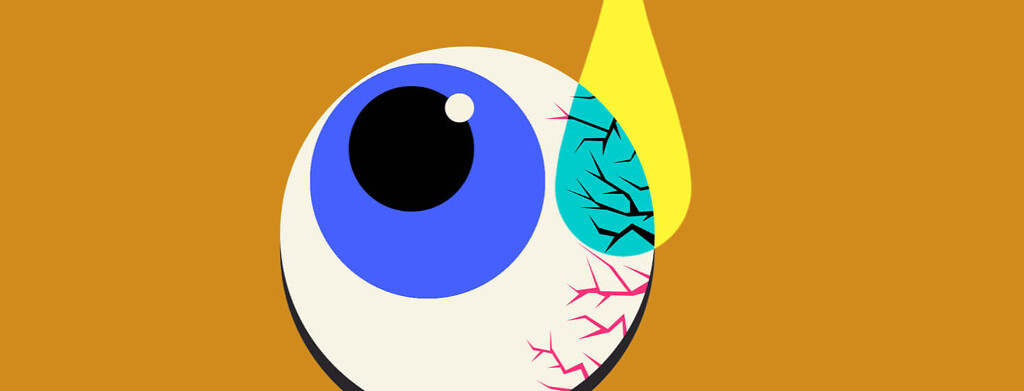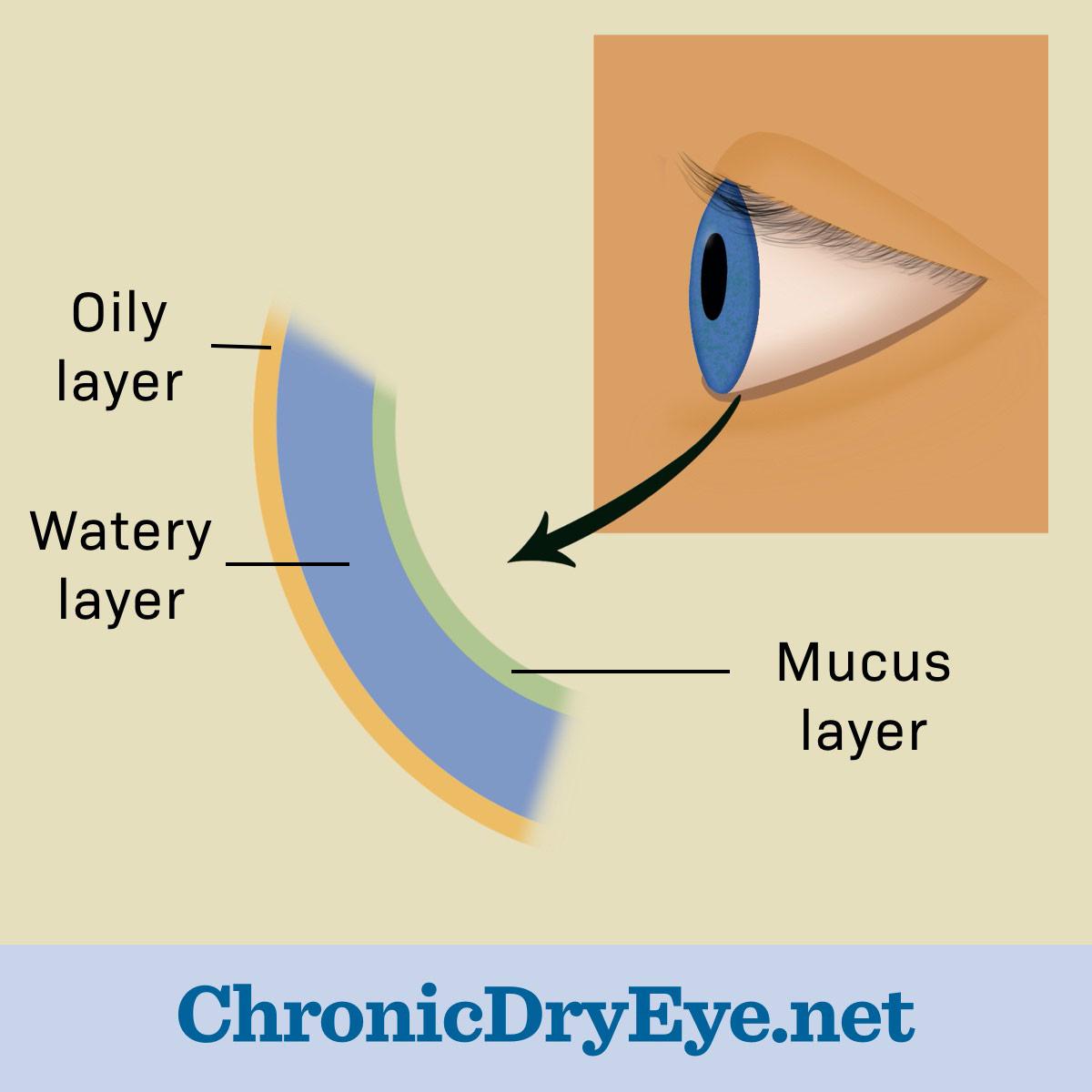Chronic Dry Eye: Parts and Function of Your Eyes and Tears
Reviewed by: HU Medical Review Board | Last updated: June 2023
Chronic dry eye is also known as dry eye syndrome (DES) or dry eye disease (DED). Dry eye is characterized by damage to the surface of the eye as a result of abnormalities in the tear film, the structure of the eye/eyelids, or the nervous system itself.1
Dry eye can occur when your eye does not make enough tears or if there is an issue with the tears that are made. It may also develop if the surface of the eye is irregular or if the eyelids do not blink or close properly.1
The results of chronic dry eye can be debilitating. The condition can affect many aspects of your life and make it difficult to read, drive, use a computer, wear contact lenses. Chronic dry eye can also be painful.1
To understand dry eye better, it helps to know the basic structure and function of your eyes and tears.
Your eye
Your eye has special glands and cells that help produce and secrete (discharge) tears. The lacrimal gland is located under the outside edge of the eyebrow within the orbit of the eye. This gland secretes the watery part of tears.2
The glands of Krause and Wolfring are located on the inside surface of your eyelids. These glands also help make the watery layer of the tear film. The meibomian glands, located on the margin of the eyelid, secrete an oil that is part of the tear film that helps to keep tears from evaporating.2
Special cells on the surface of the eye, known as goblet cells, produce a protein called mucin, which is the building block for the mucus inner layer of the tear film. Tears drain into the upper and lower puncta (small openings) on the inside corner of your eyelids, which then flows into the tear duct of the eye.2
The cornea is a thin, clear membrane covering the surface of the eye. The cornea serves 2 main purposes: protection and refraction (bending) of light for normal vision.2
How do tears work?
Every time you blink, your eyes are coated with a thin layer of tears. This layer of tears is known as a tear film. This film has 3 layers, all with different functions:3
- Oily (lipid) layer – This is the outside layer of the tear film. This layer helps to keep the tears from drying out too quickly. This layer is made by the meibomian glands.
- Watery (aqueous) layer – The middle layer of the tear film, which is made from the glands of Krause and Wolfring, as well as the lacrimal gland. This is a watery layer that makes up most of what we see as tears. Its purpose is to clean, protect, and lubricate the eye.
- Mucus (mucin) layer – The inner layer of the tear film, which helps to spread the watery layer evenly over the eye surface. This layer is made up of mucin, a protein secreted by goblet cells, and helps keep the eyes moist and free from particles. Without this layer, the tears could not coat the eye properly.
Figure 1: Tear film layers
What happens to the parts of the eye in chronic dry eye?
Your body prefers to maintain a state of balance. Many chronic diseases, including dry eye, result from a loss of this normal balance. In chronic dry eye, this loss of balance can be due to abnormalities of the eye itself, the tear film, or even the nervous system.1
Under normal conditions, your eye and tear film are in balance. The balance of oil, water, and mucus from the tear film protects and lubricates your eye. When something throws off this balance, dry eye can occur.4
Dryness on the surface of the eye then leads to chronic irritation and sometimes inflammation. Inflammation may damage the eye, cause pain, and worsen the irritation of the dry eye.
A complex condition
Chronic dry eye is complex and not well understood. Many factors can lead to or contribute to the disease, making it harder for researchers and doctors to find exact causes, contributing factors, and the best treatment. Further research on the parts and function of the eye and tears will help reveal more about how these are affected by chronic dry eye.

